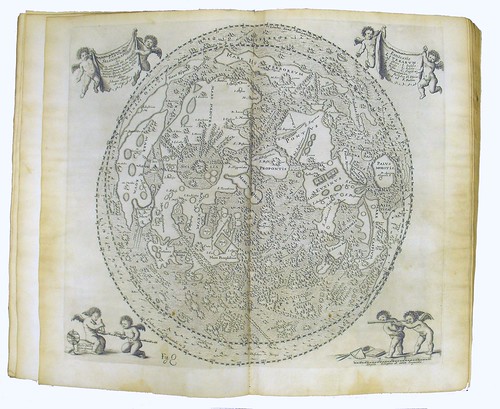Johann Hevel: Selenographia
Danzig: 1647.
Sp Coll Ea6-x.3
Johann Hevel (1611-1689) carried forward the work started by Tycho and Kepler. He acquired Kepler’s manuscripts, and carried out observations using Tycho’s methods and instrument designs. For the purposes of measurement, he preferred the open sights used by Tycho over telescopic sights, which were then coming into use. Hevel’s own observatory was a family affair: it was built on the roof of his home in Danzig and his wife Elizabeth, an able mathematician, was his close collaborator and fellow observer.
The Selenographia is widely regarded as a landmark in Renaissance astronomy. Hevel himself engraved the 137 full-page and partial plates from which the illustrations were printed. The Selenographia met with great acclaim for the beauty of its illustrations and its accuracy, and remained a highly sought-after work for a century after publication.

Image: engraved map of the moon.
Go to the next book in the exhibition: Sir Isaac Newton: Principia




